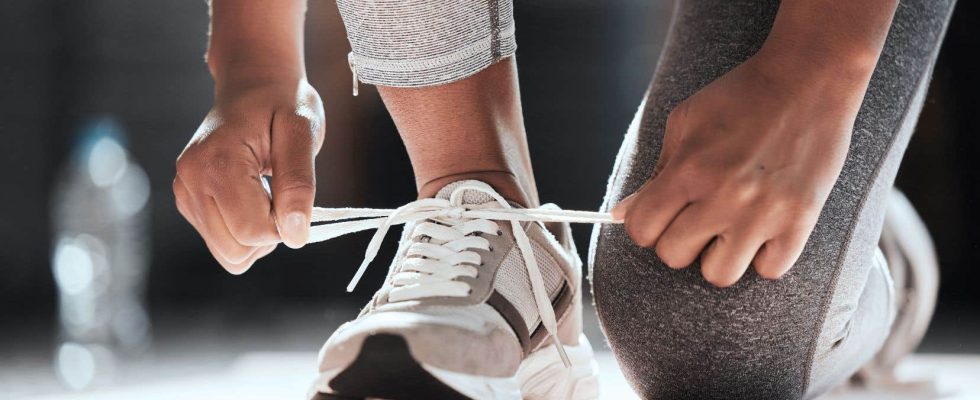This text is part of the special Feminine Leadership notebook
Women and girls face systemic discrimination in the practice of physical and sporting activities, concludes the Conseil des Montréalaises (CM) in a memorandum submitted to the municipal council last December. The organization lists its recommendations to help the City turn things around.
“Sport and gender equality do not go well together”, we can read on the introductory page of the memoir Women and sports. An obstacle course that the CM submitted to the City on December 19. Reading the document supports this premise.
It was at the request of the Commission on Culture, Heritage and Sports of the City of Montreal that the advisory body composed of 15 volunteers looked into the question of inclusiveness in access to sports offer in Montreal. “We worked with a researcher who carried out a literature review and also based it on an opinion that we submitted on this subject in 2012,” indicates Amélie Boudot, member of the CM and co-editor of the dissertation.
The first observation comes from consulting Quebec statistics: women practice less physical activities than men. And this is observed from childhood. According to a survey conducted in 2018-2019 by the Institute of Statistics of Quebec, 51% of school-age girls (6 to 11 years old) are active to moderately active, compared to 61% of boys. On the other side of the spectrum, 39% of them are very little or not at all active, compared to 31% of boys.
And the gap widens at secondary school age (12-17 years), during which 45% of young girls play almost no sport, compared to 32% of boys. “Among women, sports practice decreases with age, with a drastic decline in adolescence,” comments Amélie Boudot. In 2021, 49% of adult women reported practicing physical activity for at least 150 minutes per week, compared to 55% of men, according to Statistics Canada. The brief also emphasizes that sports practice is unequal among women themselves.
Obstacles to sports practice
The council identified several barriers to explain these disparities, starting with social norms and common sexism that can lead women to doubt their athletic skills or feel pressure to conform to female beauty standards.
The difficulty in freeing up time from domestic tasks and caring for children (or sometimes elders) is also an obstacle to practicing sports, as is the insecurity that women can feel in the spaces dedicated to it. “There is harassment in sports centers as well as in public spaces. A woman who runs on the cycle path can experience street harassment and feel unsafe if it is dark,” underlines Amélie Boudot.
Difficulties to which are added inequalities in access to infrastructure as well as socio-cultural factors such as age, income or belonging to an ethnocultural minority. “We are very aware of these factors,” says Caroline Bourgeois, vice-president of the City’s executive committee and responsible for sports and leisure, Space for Life, the French language and East Montreal. .
The elected representative particularly mentions the gender-differentiated analysis (ADS+) that the municipality has been integrating into decisions related to sports practice for several years. “It has an influence on the granting of subsidies. We support, for example, a project to develop and promote women’s soccer and, soon, a discount project for the registration of female coaches for speed skating training. We also ensure that we can find [dans les programmes] sports disciplines which have a female predominance. »
Recommendations
Because he believes that Montreal has a major role to play in equal access to sport, the CM includes in his brief a series of best practices and recommendations on which the City can act. Mainly by improving the diversity of the activities offered and their cost, the proximity of facilities and the flexibility of schedules. “Develop, for example, a range of sports services that mothers could follow at the same time as their children,” says Amélie Boudot.
It is also about improving the feeling of security of women and girls, particularly in the development of parks and public spaces where they are more able to play sports. “When we talk about lighting, developing new parks, cycle paths or multifunctional trails, being reminded of these types of recommendations helps us enormously in our work,” says Caroline Bourgeois.
The CM also recommends the creation of a gender-sensitive budget to ensure equitable distribution of expenses.
Another point is to develop a guide for the districts to harmonize good practices. “There is little consistency from one to the other. This is why we want to encourage leadership in the central city, including to ensure that we have more women among its executives,” explains Amélie Boudot. “At the Montreal sports department, we have reached the parity zone, but it is important to be able to ensure that the departments of the 19 boroughs are made aware, that we all have this perspective,” assures Caroline Bourgeois.
If the vice-president of the executive committee cannot specify when an official response will be given to the Conseil des Montréalaises, she takes note of the conclusions of the brief. “There are some great initiatives, but we can always do better, improve our practices, but also raise awareness of the services offered. It’s ongoing work whose changes are visible in the long term,” underlines the elected official, who says she is tackling it by promoting consultation and field work with local stakeholders.
This content was produced by the Special Publications team at Duty, relating to marketing. The writing of the Duty did not take part.
